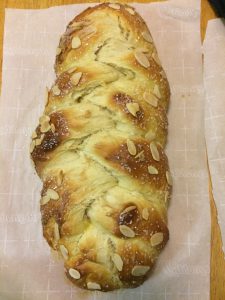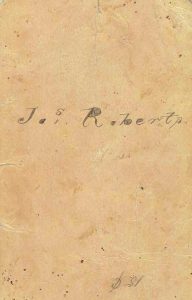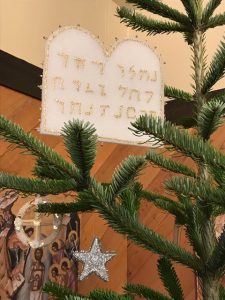 As the old year winds down over the next few days, I hope that dedicated Vita Brevis readers will spare a few moments to (re)read some of the most popular posts of 2017. (The second part of this omnibus post will run on New Year’s Day 2018.) The following twelve posts have some of the highest page view counts of the year, but in fact Christopher C. Child should appear four times on this list – that is, one-third of the year’s most popular Vita Brevis posts belong to him. To mix things up a little, I have included other posts, so as to spread the authorial wealth: Chris, Michelle Doherty, and Jeff Record each have two posts here, one appearing today and the other on Monday. Continue reading 2017: the year in review
As the old year winds down over the next few days, I hope that dedicated Vita Brevis readers will spare a few moments to (re)read some of the most popular posts of 2017. (The second part of this omnibus post will run on New Year’s Day 2018.) The following twelve posts have some of the highest page view counts of the year, but in fact Christopher C. Child should appear four times on this list – that is, one-third of the year’s most popular Vita Brevis posts belong to him. To mix things up a little, I have included other posts, so as to spread the authorial wealth: Chris, Michelle Doherty, and Jeff Record each have two posts here, one appearing today and the other on Monday. Continue reading 2017: the year in review
Monthly Archives: December 2017
Modern-day melting pots

“How is your celebration of the holiday influenced by previous generations?” asked a recent survey in The Weekly Genealogist. The first item in the list of answer choices was “I serve food or drinks that are traditional in my family.“ I quickly checked it off, as I was in the midst of baking, making sure that my kids would come home to the seasonal treats they – and now their spouses – expect.
One thing I have baked at Christmas in recent years is nisu, a sweet Finnish bread I remember eating at the home of my Finnish-born grandmother, known to all her grandkids as Mumma. When I visited Finland in 2012, a second cousin (granddaughter of Mumma’s sister) served it to me, and the scent of the cardamom took me back to my childhood. Continue reading Modern-day melting pots
Bittersweet discoveries
 I have traced my husband’s paternal line back to Anthony Siekman, who was born in Germany about 1821. I knew from his petition for naturalization that he arrived in the United States in 1852, but I did not know much beyond that. As the progenitor of this line in America, I have Anthony to thank for the surname I carry after marriage and the name my children will carry into the world. Perhaps this is the reason why I first took an interest in piecing together the details of his life, but what I discovered was a tragic story that led to more questions. Continue reading Bittersweet discoveries
I have traced my husband’s paternal line back to Anthony Siekman, who was born in Germany about 1821. I knew from his petition for naturalization that he arrived in the United States in 1852, but I did not know much beyond that. As the progenitor of this line in America, I have Anthony to thank for the surname I carry after marriage and the name my children will carry into the world. Perhaps this is the reason why I first took an interest in piecing together the details of his life, but what I discovered was a tragic story that led to more questions. Continue reading Bittersweet discoveries
‘The old familiar music’

61 Bowdoin Street, Boston, Sunday, 18 December 1870: Cold weather at last – Morris [Gray] had a good day’s skating on the little pond at Uncle John [Gray]’s[2] in Cambridge yesterday – and is tired out to day par consequent. Cora Weld & F.G. Peabody[3] have really enjoyed her visit here this week – she is much more accessible here, from Cambridge, where his duties [at Harvard Divinity School] confine him steadily, than at Jamaica Plain – and he can see her every day instead of only 2 or 3 times a week. I am not a very fierce duenna, having been young and in love once myself; so we leave them to themselves a great deal… Continue reading ‘The old familiar music’
Kerosene and other cookies
 Grandma, Nana, Memaw, Nonna, Babushka: however they’re known, most cultures venerate grandmothers in some way, often through memories of food and its preparation. So it was that while working through a binder of cookie recipes for my annual Christmas Cookie-Baking Binge, I decided to find out what my grandmothers and great-grandmothers baked for Christmas goodies. After all, our ancestors connect to us with food. However, I come from a rather reticent family steeped more in routine than tradition, especially when it comes to holidays. I was starting from a point of nonspecific direction, a condition entirely too familiar. Continue reading Kerosene and other cookies
Grandma, Nana, Memaw, Nonna, Babushka: however they’re known, most cultures venerate grandmothers in some way, often through memories of food and its preparation. So it was that while working through a binder of cookie recipes for my annual Christmas Cookie-Baking Binge, I decided to find out what my grandmothers and great-grandmothers baked for Christmas goodies. After all, our ancestors connect to us with food. However, I come from a rather reticent family steeped more in routine than tradition, especially when it comes to holidays. I was starting from a point of nonspecific direction, a condition entirely too familiar. Continue reading Kerosene and other cookies
Compiling knowledge
 Applicants to the Society of the Descendants of the Colonial Clergy (SDCC) must have “a proven lineal lawful descent from a clergyman who was regularly ordained, installed, or settled over a Christian church within the limits of the thirteen colonies prior to 4 July 1776.” Although not a descendant of a colonial clergy ancestor, I was invited to attend the SDCC business meeting on Saturday, 4 November 2017, because I was a speaker during their annual meeting luncheon. Continue reading Compiling knowledge
Applicants to the Society of the Descendants of the Colonial Clergy (SDCC) must have “a proven lineal lawful descent from a clergyman who was regularly ordained, installed, or settled over a Christian church within the limits of the thirteen colonies prior to 4 July 1776.” Although not a descendant of a colonial clergy ancestor, I was invited to attend the SDCC business meeting on Saturday, 4 November 2017, because I was a speaker during their annual meeting luncheon. Continue reading Compiling knowledge
Ninigret II

A relatively recent treasure added to the NEHGS collections is a late nineteenth-/early twentieth-century oil painting of a Native American sachem. NEHGS purchased this painting in early 2016 from an art dealer. The portrait is traditionally believed to depict Ninigret II (ca. 1610–1677), a sachem of the eastern Niantics, a Narragansett tribe that held extensive lands in what is today Rhode Island.
Ninigret appears to have been a skillful player on the stage of seventeenth-century New England politics. He allied the Niantics with the English against the Pequots in 1637, and kept his tribe out of King Philip’s War in the 1670s. Continue reading Ninigret II
‘Crushed by our great loss’

61 Bowdoin Street, Boston, Monday, 17 April 1865: We have captured Mobile, with 3,000 prisoners & 300 cannon. We have long held its harbor & forts – now this, the last important Southern seaport, is in our hands. A few days ago how gladly we would have greeted this good news – now we are so crushed by our great loss, so stunned by the awful circumstances attending it, that we hardly give any heed to the new tale of success!
President Lincoln’s funeral takes place on Wednes’y April 19th! The anniversary of battle of Lexington – and of the firing on Mass. 6th in 1861, by the mob in Baltimore. Continue reading ‘Crushed by our great loss’
An unsavory connection
 When Chris Child completed the chart of the ancestry of Meghan Markle, which depicts her descent from Edward III and the common ancestry she shares with Prince Harry, I was intrigued by Markle’s early American ancestors. In looking over the chart, one couple in particular caught my eye: John Smith and Mary “Polly” Mudgett.
When Chris Child completed the chart of the ancestry of Meghan Markle, which depicts her descent from Edward III and the common ancestry she shares with Prince Harry, I was intrigued by Markle’s early American ancestors. In looking over the chart, one couple in particular caught my eye: John Smith and Mary “Polly” Mudgett.
As someone who has seen one too many true crime documentaries on Netflix, the surname Mudgett reminded me of Herman Webster Mudgett, more commonly known as H.H. Holmes, one of America’s first serial killers. H.H. Holmes is infamous for his “murder castle,” a hotel built for the 1893 Chicago World Fair where several of Holmes’ crimes are thought to have occurred. Continue reading An unsavory connection
More Moses Marcus

Last weekend I had an extremely fruitful session of something my husband and I call “Moses Marcussing.” While the Rev. Moses Marcus is not an ancestor or even a cousin of mine, he appears in my family tree as the father-in-law of my first cousin five times removed, and despite his infinitesimal kinship to me, I consider him one of the jewels in my genealogical crown.
Vita Brevis readers may remember a few details of his life contained in a tribute to his daughter Lelia, who was lost during a hurricane in 1875. Three years ago I was contacted by someone requesting details about her father, after they’d found information I’d provided for her memorial on Find A Grave. You can imagine the thrill of getting such a request, since I fancy myself the world’s foremost expert on the Rev. Moses Marcus. Continue reading More Moses Marcus